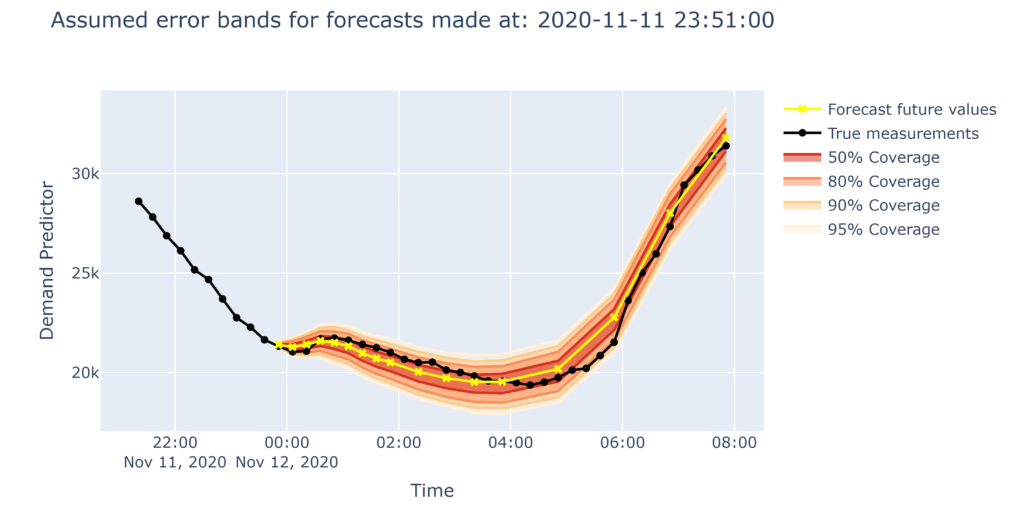Summary
National Grid ESO (NGESO) is the electricity system operator for Great Britain. Its Electricity National Control Centre (ENCC) is responsible for making decisions on how to move electricity around the country, second by second, to keep supply and demand in perfect balance. However, the rapid growth of renewable and embedded generation necessary to achieve net zero-carbon targets has resulted in increasing uncertainty when making these decisions. Inevitably, the costs of balancing the grid stemming from these increasingly complex decisions are also rising.
The Smith Institute is helping NGESO harness the power of mathematics to provide opportunities for the ENCC to make more economical and secure balancing decisions through the innovative Real-Time Error and Cost Tracking (REACT) project.
Context
ENCC engineers are faced with the task of making complex real-time balancing decisions necessary to ensure that the electricity supply matches the demand at any given point in time. To overcome this challenge, NGESO use a series of forecasts that range from the national electricity demand level to the forecasted renewable energy generation based on weather conditions. In recent years, the electricity sector in Great Britain has seen an explosion of new renewable and embedded generators such as offshore wind farms and roof top solar.
The Department for Business, Energy and Industrial Strategy (BEIS) estimates that combined onshore and offshore wind capacity in the UK grew from 5.4 GW in 2010 to over 24 GW in 2019. This is key in helping the Great Britain to achieve its net zero-carbon targets. However, it has meant that the number of “players”, known as Balancing Mechanism Units (BMU’s) in the industry, has risen from around 40 to over 1,000.

Challenge
This substantial change in the makeup of the GB electricity system has meant that the NGESO ENCC has been subjected to an ever-increasing level of uncertainty when making decisions. One such source of uncertainty is the limitations of the forecasts that the ENCC uses to make these critical balancing decisions. As with any forecasting, they have different levels of accuracy. At present, the ENCC engineers are presented only with point forecasts. In other words, single predictions of the future.
As we cover in our SI Insight on Probabilistic Forecasting, point forecasts do not enable engineers to understand the level of uncertainty that they are faced with. This means they cannot make decisions that account for it, potentially leading to less than economically optimal outcomes. Inevitably, the costs of balancing the electricity grid have risen and will continue to do so unless the underlying challenges are addressed. Gone are the days of a simple electricity system dominated by a handful of large fossil-fuel generation plants.

Solution
Overcoming these challenges requires that two goals be achieved. Firstly, NGESO recognises that not all forecast inaccuracies lead to similar cost impacts. In other words, some forecast inaccuracies are more costly than others. Therefore, NGESO should be able to understand the different impacts of forecast inaccuracy on balancing costs. Secondly, the ENCC engineers should have access to a real-time visualisation of the retrospective forecast errors and their associated cost impacts so these can be incorporated into their decision making.
By leveraging our extensive experience in forecasting and mathematical modelling, we are helping NGESO:
- Identify and quantify the inaccuracies in the existing forecasts
- Identify opportunities for economic performance improvement
- Provide both of these to the ENCC engineers in a simple yet effective visual manner so that they can be incorporated into their decision making.
Ultimately the purpose of the REACT project will be to help NGESO continue to meet its dual goals of providing an increasingly safe and economical service to the electricity customers of Great Britain whilst preparing to operate a net zero-carbon grid by 2025. The Smith Institute is proud to continually support NGESO in achieving these.
See the case study on page 8 of National Grid ESO’s NIA report.
